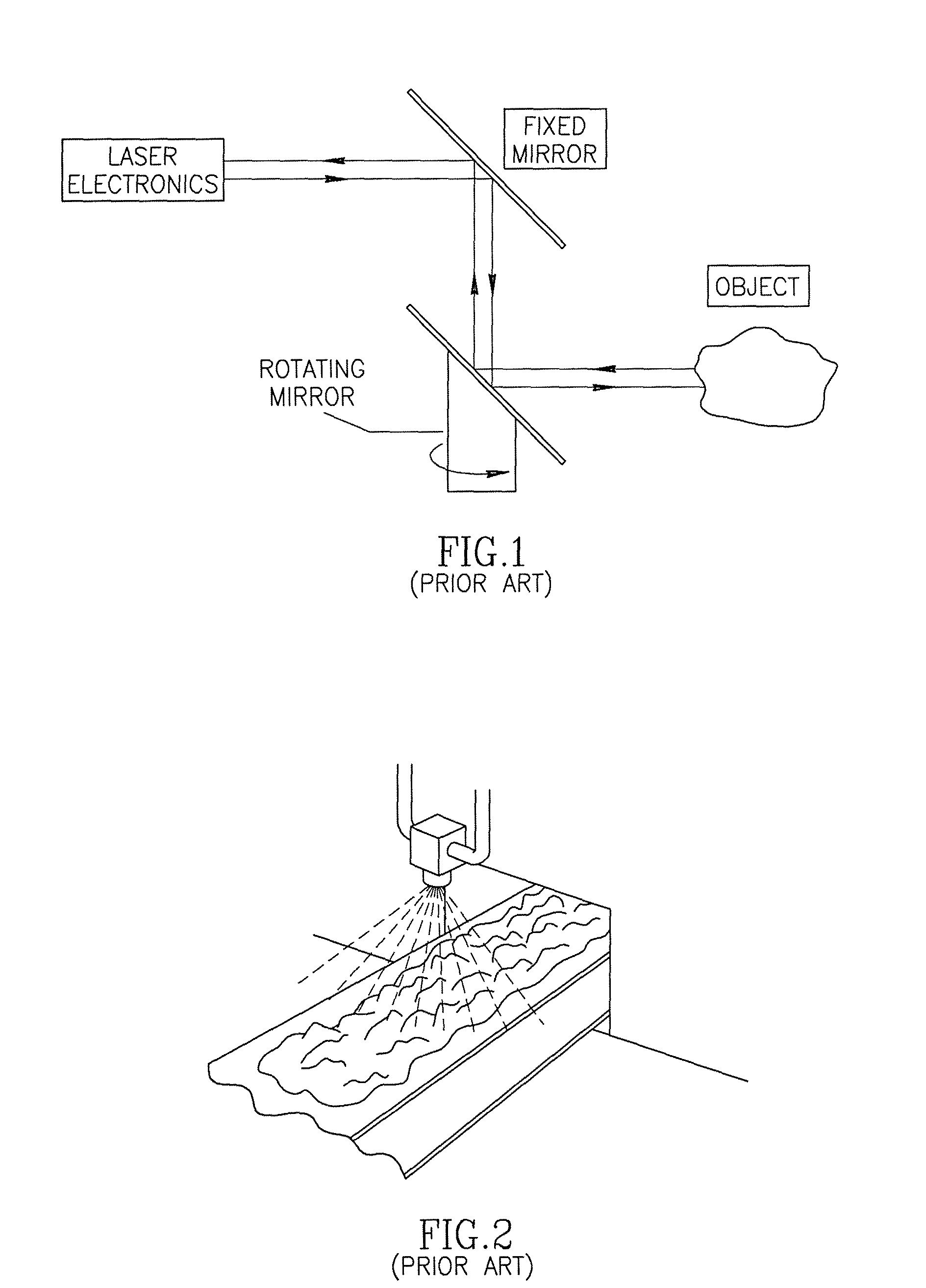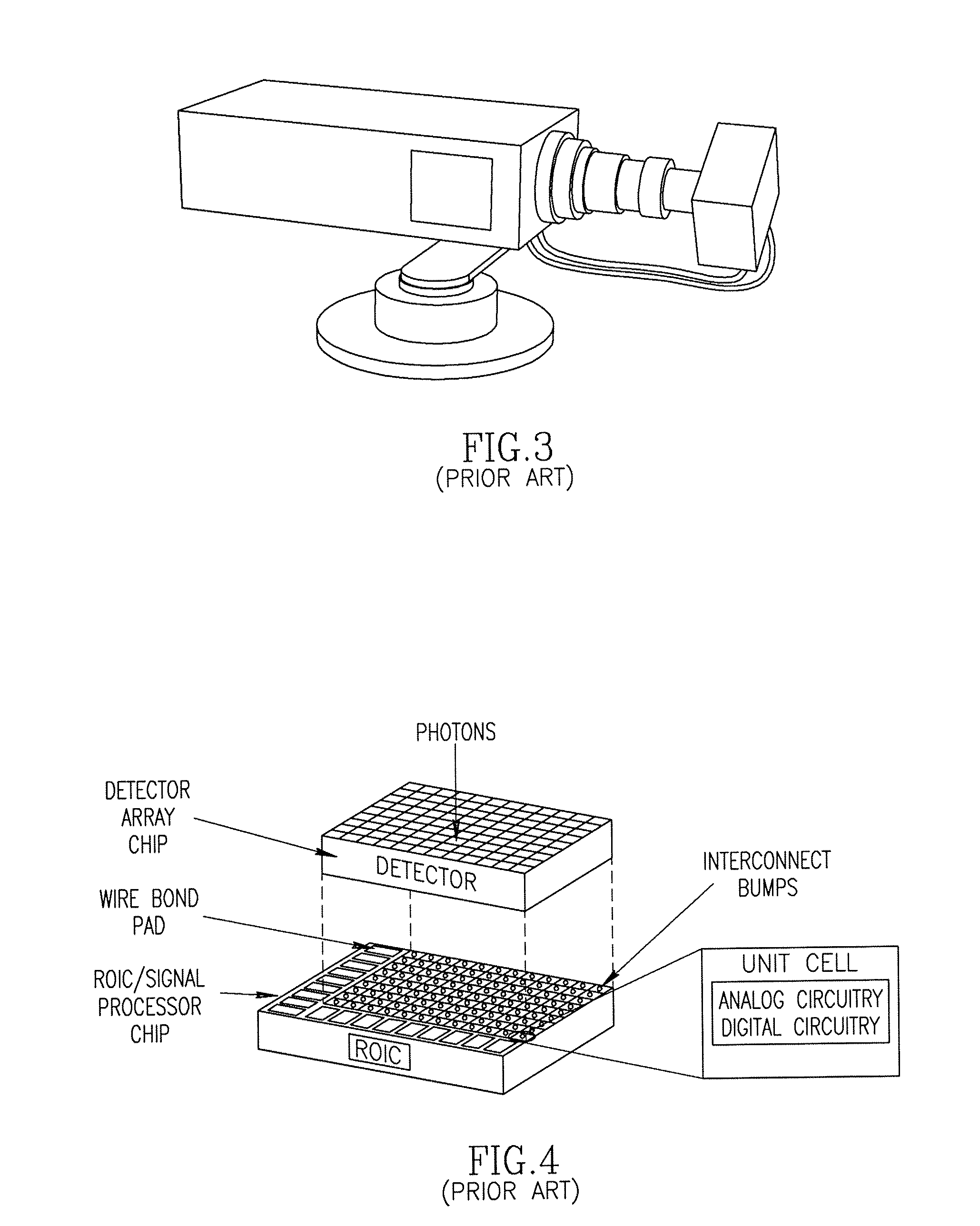High definition lidar system
a lidar system and high-definition technology, applied in the field of high-definition lidar systems, can solve the problems of not necessarily scaling with the number of lasers, the device is inherently limited to the number of pixels it can generate, and the requirement of 3-d point clouds, etc., to achieve the effect of compactness and ruggedness
- Summary
- Abstract
- Description
- Claims
- Application Information
AI Technical Summary
Benefits of technology
Problems solved by technology
Method used
Image
Examples
Embodiment Construction
[0033]FIGS. 5-12 illustrate a Laser Imaging Detection and Ranging (Lidar) terrain mapping and obstacle detection system employed as a sensor for an autonomous vehicle. The Lidar system includes 8 assemblies of 8 lasers each as shown in FIG. 5 or 2 assemblies of 32 lasers each forming a 64-element Lidar system as shown in FIGS. 13-26. The system has a 360-degree horizontal field of view (FOV) and a 26.8-degree vertical FOV. The system is typically mounted on the top center of a vehicle, giving it a clear view in all directions, and rotates at a rate of up to 200 Hz, thereby providing a high point cloud refresh rate, such high rate being necessary for autonomous navigation at higher speeds. At this configuration, the system can collect approximately 1 million time of flight (TOF) distance points per second. The system provides the unique combination of 360 degree FOV, high point cloud density, and high refresh rate. The standard deviation of TOF measurements is equal to or less than 5...
PUM
 Login to View More
Login to View More Abstract
Description
Claims
Application Information
 Login to View More
Login to View More - R&D
- Intellectual Property
- Life Sciences
- Materials
- Tech Scout
- Unparalleled Data Quality
- Higher Quality Content
- 60% Fewer Hallucinations
Browse by: Latest US Patents, China's latest patents, Technical Efficacy Thesaurus, Application Domain, Technology Topic, Popular Technical Reports.
© 2025 PatSnap. All rights reserved.Legal|Privacy policy|Modern Slavery Act Transparency Statement|Sitemap|About US| Contact US: help@patsnap.com



